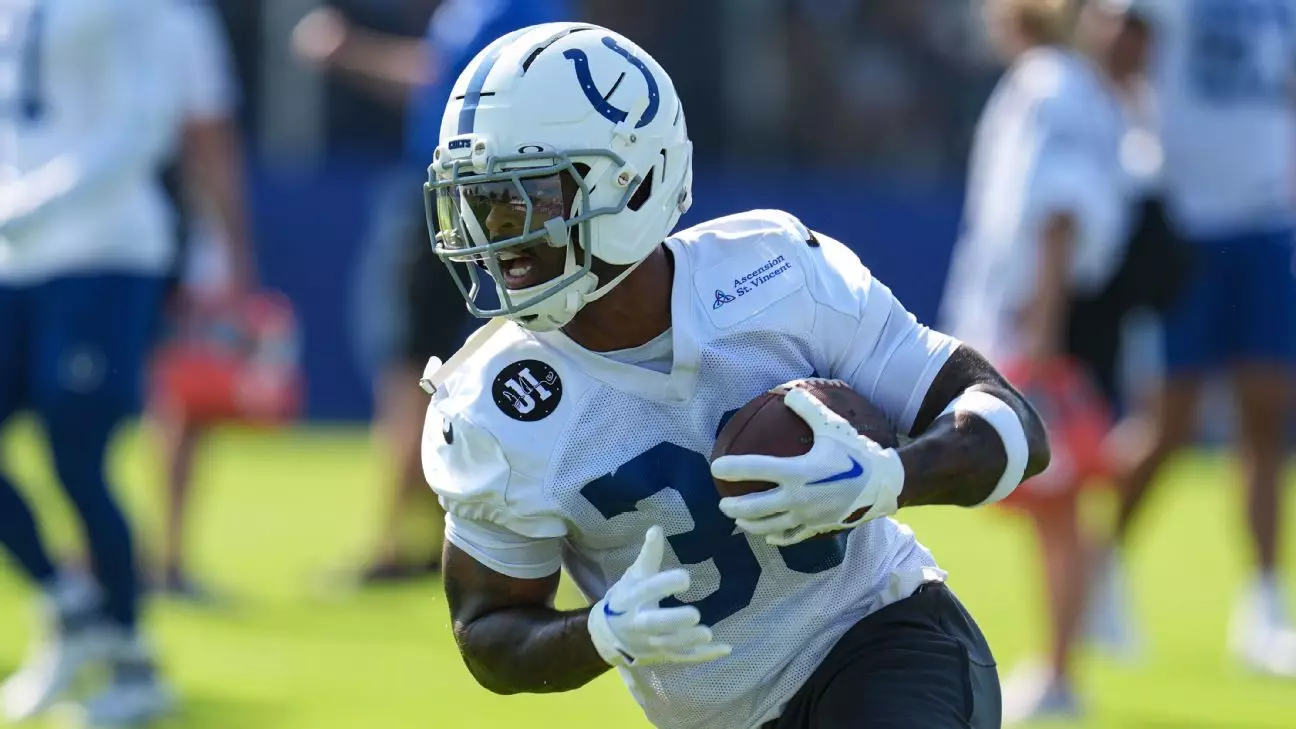In the tragic event at Colts training camp, Salvon Ahmed, a seasoned NFL running back, endured a gruesome lower-leg injury resulting from a dangerous hip-drop tackle—a technique long banned but still alarmingly prevalent on the field. This injury serves as a stark reminder of how the sport’s brutal physicality and the quest for toughness often overshadow player safety. While the team attempts to balance competitive intensity with development, incidents like this expose the flaws in football’s approach to injury prevention and the glaring need for a cultural shift.
The incident took place during a live tackling drill, a move intentionally designed to simulate game conditions and strengthen players’ resilience. Yet, in pursuit of toughness, coaches are sometimes willing to push players into high-risk situations. The decision to include live tackling in a developmental period raises serious questions about the values embedded within the sport—does winning and physicality outweigh the well-being of athletes? The risks associated with techniques like the hip-drop tackle, despite bans and safety campaigns, reveal a stubborn adherence to old-school violence that continues to haunt the game.
From the outset, Ahmed’s injury was visibly severe, with trainers rushing to stabilize him after he grimaced and grabbed his ankle in pain. The scene was unsettling, casting a somber pall over the practice field. It underscores how even with modern safety protocols, the spectacle of football often blurs the line between grit and recklessness. The injury also highlights a systemic issue: a culture that sometimes prioritizes demonstrating toughness over protecting its players. Coaches and players alike must grapple with the painful reality that dangerous techniques—like hip-drops—are still part of the game’s dangerous legacy that needs urgent reform.
Questionable Practices Undermining Player Welfare
The Colts’ coaching staff, led by Shane Steichen, justifies the decision to include live drills as essential to developing a resilient, aggressive team identity. However, such explanations often mask a deeper flaw: a propensity to normalize risk-taking at the expense of player health. Steichen’s comments about creating “an edge” and building “toughness” sound admirable on the surface but fall apart under scrutiny when a player suffers a catastrophic injury. It appears that an outdated bravado—championing physical toughness—continues to drive decision-making, even when evidence demonstrates the long-term harm inflicted by reckless tactics.
Furthermore, the incident throws a harsh spotlight on the NFL’s ongoing struggle to enforce safety regulations. Despite the ban on hip-drop tackles last season, their occurrence persists, indicating a disconnect between policy and practice. The fact that a coach or player might see such tackles as part of “creating an edge” reveals a troubling culture where rules are sidestepped or ignored, risking not just a player’s health but also the integrity of the game.
Team leaders like linebacker Zaire Franklin emphasize resilience, insisting that the team must continue practicing to improve. While maintaining competitiveness is vital, it’s equally essential to question the sacrifice of safety for the sake of marginal gains. Franklin’s commitment, admirable as it is, should not blind us to the systemic failure in creating a genuinely safe environment. The sport’s obsession with toughness breeds an environment where injuries like Ahmed’s become tragic but predictable consequences of a culture that still prizes aggressive violence over safeguarding its athletes.
A Wake-up Call for Football’s Future
Salvon Ahmed’s injury should serve as a clarion call to the sport’s governing bodies, coaches, and players: it is time to fundamentally reevaluate priorities. Football has long been lauded for its physicality, but at what cost? The game’s intense violence has always been a defining characteristic, but that does not mean players must pay with their health. The dangerous practices that persist despite safety regulations are symptomatic of a sport caught between tradition and modernity—a sport still grappling with how to be both lethal and safe.
The NFL and college programs alike need a cultural overhaul, moving away from the glorification of violence towards emphasizing technique, safety, and player longevity. The emphasis on “toughness” should shift from risking injuries to smart, disciplined play that respects player well-being. Education on safe tackling techniques must be prioritized, and unsafe tactics like hip-drops should be met with strict disciplinary action. Only through such measures can the sport evolve into a safer, more sustainable form of competition.
In reflecting on Salvon Ahmed’s injury, it becomes clear that before the next athlete is dragged off the field in anguish, there must be a collective effort to confront the ingrained violence within football. This incident underscores not just the physical danger but also the moral obligation of those involved in the game to ensure that the pursuit of victory does not come at the expense of players’ health and future.


Leave a Reply